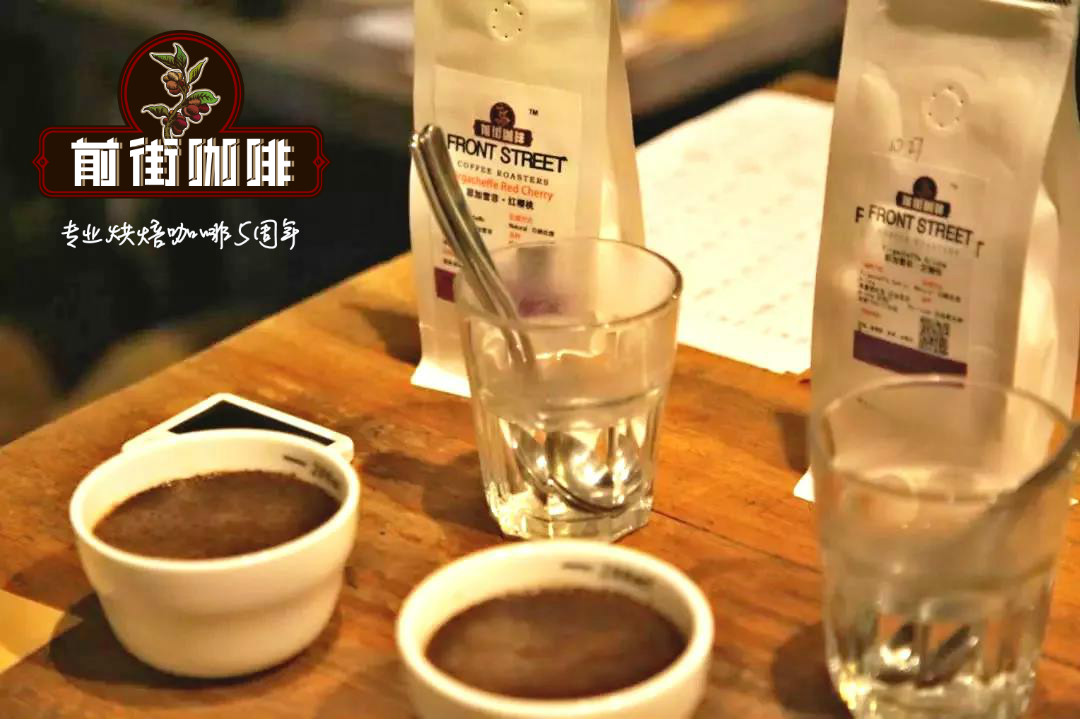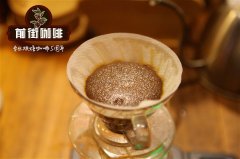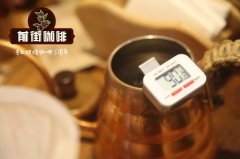The type of Yunnan coffee introduces which brand of Yunnan coffee is better.

Professional coffee knowledge exchange More coffee bean information Please pay attention to coffee workshop (Weixin Official Accounts cafe_style)
Typica
Typica is one of the oldest native varieties in Ethiopia. The top leaves of Tiebika are bronze, the beans are oval or thin and pointed; the flavor is elegant, but the physique is weak, the disease resistance is poor, and the fruit yield is small.
Typica is one of the oldest varieties of Arabica coffee found today, the other being bourbon. The Arabica species originated in Ethiopia, where it still grows naturally today in the pristine rainforest upland. 13--14 In the 17th century, the species was brought to Yemen, where it was bred in Hortus Botanicus in Amsterdam around 1700. The tiepika saplings were the first saplings from the royal gardens of the netherlands to be brought into central and south america and planted in the new world. Iron pickup is a pure bloodline of precious trees, fruit oval, leaves brass, fruity flavor was varied.
The iron-pika species is one of the oldest Arabica species, and many other variants have been derived. Iron pickup bean slender, tall tree, fruit oval, branches slightly inclined. Iron pickup four slender, into a spread potential, tilt angle of 50- 70 degrees. The coffee yield per tree is very low, but the cup score is high.
Originally known as Arabika Tipika, the Scottish regiment brought this tree from Yemen to Kenya and planted it with copper-colored leaves. The Hawaiian iron-pickup species was introduced from Guatemala and renamed Kona, with brassy leaf tips. Due to geographical reasons, the iron cards planted in other coffee belts in the world are different. Iron pickups have evolved genetically. Many variants are more adaptable to the surrounding environment and produce new characteristics. They are usually considered new varieties. For example, Mexican Typica is slightly different from Hawaiian Typica, so there are different names: Criollo (South America), Arabigo (Americas), Kona (Hawaii), Pluma Hidalgo (Mexico), Garundang (Sumatra), Blue Mountain (Jamaica, Papua New Guinea), São Bernado & San Ramón (Brazil), Kent and Chickumalgu (India).
A characteristic of the leaf tips of the iron pickup tree species is that they are red copper, called red top coffee. Coffee tree opposite leaves are long oval, leaf surface smooth, terminal branches are very long, few branches, and flowers are white, open at the base of the petiole connecting branches. Mature coffee berries look like cherries, are bright red, sweet flesh, containing a pair of seeds, namely coffee beans (Coffee Beans).
Ironcake was the first coffee variety grown in the New World. Java's tinplate card, a Dutch gift to Louis XIV of France, survived in Persian gardens and produced seeds that were brought to Martinique by the French in 1720.
Tin card is the ancestor of many coffee derivatives. As with other Arabica species, the fruit is oval, the branches are slightly inclined, the tree has 3.5- 4 michels, the branches are inclined at 50- 70 degrees, and the yield of iron pickups is very low, but the cup quality is very high.
Yunnan coffee tin card coffee beans
Iron pickup (Typica): The shape is oval, and the bean body is flat and thin from the side. Even if the altitude of the planting area is different, the thickness of the side of the raw bean will not be too different.
The most sought species of iron pickup were brought to Malabar, India by the Yemenis from Ethiopia, and then to Indonesia by the Dutch. It was later brought from the West Indians to the French colony of Martinique.
It was subsequently grown in other growing areas, resulting in a number of variants: Criollo (South America), Arabigo (Central America), Kona (Hawaii), Pluma Hidalgo (Mexico), Garundang (Sumatra), Blue Mountain (Jamaica, Papua New Guinea), San Bernado & San Ramon (Brazil), Kents & Chickumalgu (India).
Yunnan Huaguo Mountain (Typica):
Degree of roasting: medium roasting
Dried aroma: pear-fruit, vanila-like, honey-like, peach tea, ripe orange, jasmine hints
Wet aroma: nutty, milky chocolate, herbal
Palate: Soft on the palate, Asian herb aroma, lively and bright acidity, cheeks salivation, sour softness, mellow balance, rich layers, aftertaste dark chocolate, honey, sucrose flavor obvious, completely cooled, brown sugar flavor.
Recommended cooking methods: siphon, hand brewing
Abrasion: 4 (Fuji R440)
Water temperature: 90°C
Other suggestions for trickle-filtration extraction:
Normal pressure, recommended abrasiveness of 3.5-4/water temperature 90°C
Aile pressure, recommended 2.5 grind, water temperature 88°C
Hand washing: 3.5 grinding degree, water temperature 89°C
Related recommendations: Yunnan small coffee beans how to brew Yunnan small coffee brand recommendations
Important Notice :
前街咖啡 FrontStreet Coffee has moved to new addredd:
FrontStreet Coffee Address: 315,Donghua East Road,GuangZhou
Tel:020 38364473
- Prev

The Story of Jamaican Coffee introduction to the history of Jamaican coffee
Professional coffee knowledge exchange more coffee bean information please follow the coffee workshop (Wechat official account cafe_style) the story of Jamaica Blue Mountain Coffee Blue Mountain Coffee is the best coffee in the world. The Blue Mountains are located in the east of Jamaica, because the mountain is surrounded by the Caribbean Sea. Whenever the weather is clear, the sun shines directly on the blue sea, reflecting from the peaks.
- Next

Introduction of Yunnan Coffee Flavor and brewing methods in Coffee growing areas of Yunnan
Professional coffee knowledge exchange more coffee bean information please follow the coffee workshop (Wechat official account cafe_style) 01 | brief introduction of Yunnan small grain coffee is suitable for growing in the mountain area at an altitude of 8001800 meters. If the altitude is too high, it will taste sour, and if it is too low, it will taste bitter. Small grains of coffee are mostly planted in dry and hot valleys about 1100 meters above sea level, so they are moderately sour, rich and mellow.
Related
- How did the Salvadoran coffee industry develop in Central America?
- What exactly does the golden cup extraction of coffee mean?
- The Origin of Coffee flower
- [2023 Starbucks World Earth Day] there are more meaningful things besides free Starbucks coffee!
- What kind of coffee is there in Spain? 9 Flavors of Spanish Coffee
- Aromatic African coffee| Kenya's coffee culture and historical production area
- Liberica Coffee Bean knowledge: the characteristics of Liberian Coffee beans of the three original species of Coffee beans
- The origin and formula of Spanish latte introduces the taste characteristics of Bombon coffee in Valencia, Spain.
- How to adjust the solution of over-extracted coffee
- What is the tasting period of coffee beans? What is the period of coffee and beans? How should coffee wake up and raise beans?

